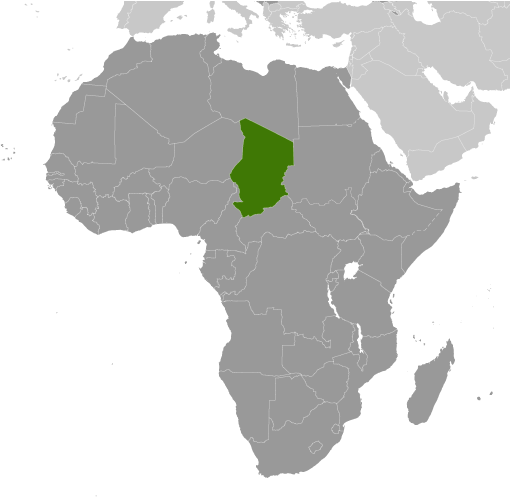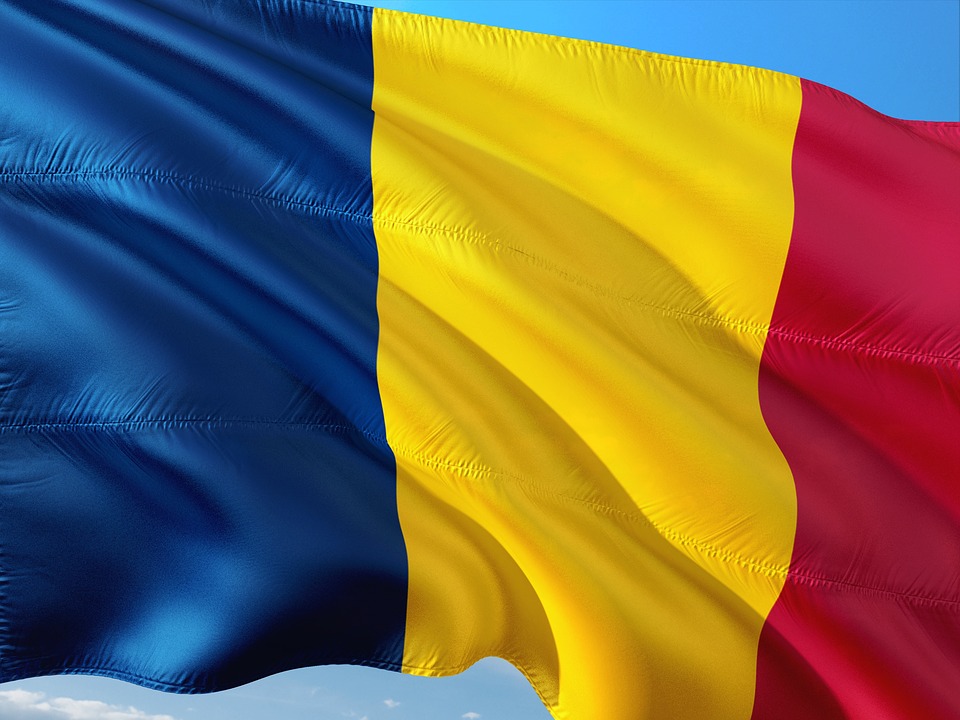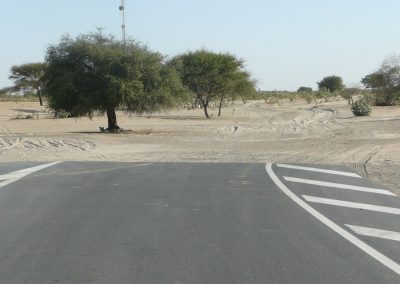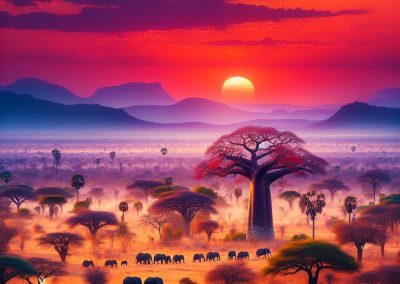Chad
(Jumhūriyyah Tshad (Arabic); République du Tchad (French) (Republic of Chad))

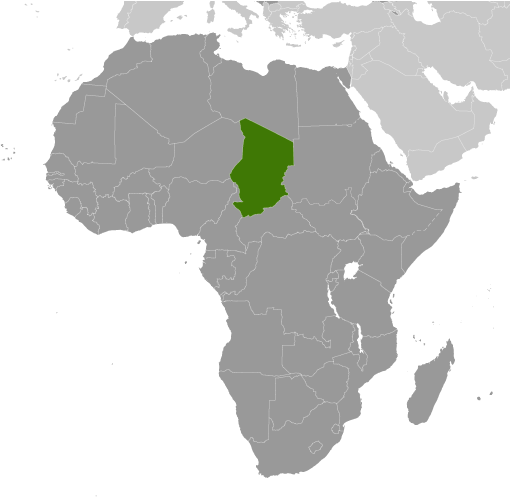
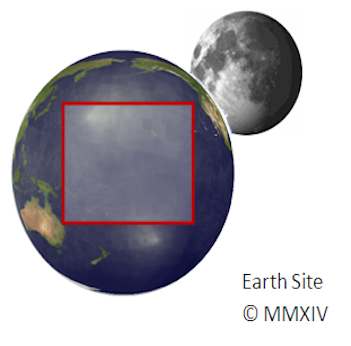
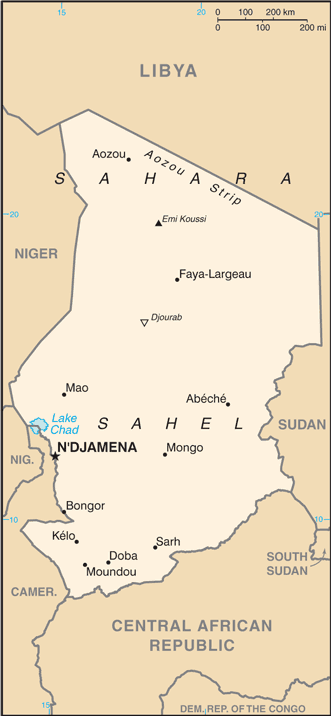
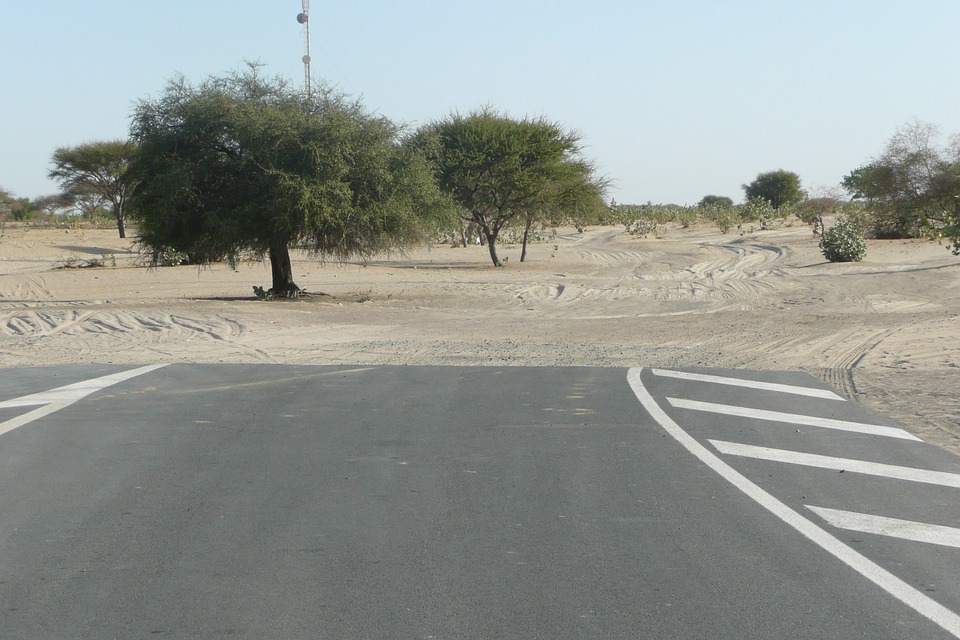
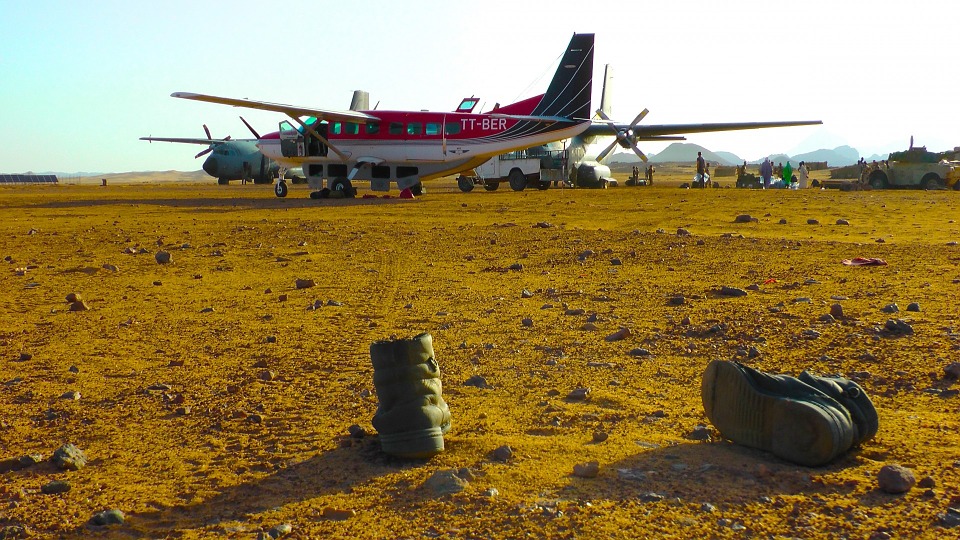
Capital of Chad: N’Djamena
Population (Estimated Jull 2012): 10,975,648
Area: 495,755 km2 or 495,755 mi2
Currency: CFA franc (CFAF)
Official Language: Arabic; French
Political Information: Presidential Republic
Official Religion: No Official Religion (approximately 53.1% of the population are Muslim, 20.1% are Catholic, 14.2% are Protestant, 7.3% are Animist, 2.2% have other religious beliefs and 3.1% have no religious beliefs)
Highest Mountain: Emi Koussi at 3,415m or 11,204ft
GDP Official Exchange Rate (OER is more precise at gauging a countries economic power)
(Estimated 2011): $9.6 billion (US$) or (GBP)
GDP (OER) Per Capita (per member of the population estimated 2011): (US$) or (GBP)
GDP Purchasing Power Parity (PPP is good for gauging living conditions and use of resources but not as accurate as OER. This data has been calculated based on the sum value of all goods and services produced in the country valued at prices prevailing in the United States)
(Estimated 2011): $19.69 billion (US$) or (GBP)
GDP (PPP) Per Capita (per member of the population estimated 2011): $1,900 (US$) or (GBP)
Time Zone (GMT/UTC): +1:00
Counties/Provinces/States: 22 regions (regions, singular – region); Barh el Gazel, Batha, Borkou, Chari-Baguirmi, Ennedi, Guera, Hadjer-Lamis, Kanem, Lac, Logone Occidental, Logone Oriental, Mandoul, Mayo-Kebbi Est, Mayo-Kebbi Ouest, Moyen-Chari, Ouaddai, Salamat, Sila, Tandjile, Tibesti, Ville de N’Djamena, Wadi Fira
Leaders: President Idriss DEBY Itno, Lt. Gen. (since 4 December 1990). Note: prime minister position eliminated under the 2018 constitution with Prime Minister Emmanuel Nadingar.
Sources: CIA World Fact Book, Encyclopaedia Britannica.
Chad
Chad is a landlocked country located in Central Africa. It is bordered by Libya to the north, Sudan to the east, the Central African Republic to the south, Cameroon and Nigeria to the southwest, and Niger to the west. With a population of over 15 million people, Chad is one of the largest countries in Africa. The capital city is N’Djamena.
History of Chad: From pre-colonial times to present day
Chad has a rich and complex history that dates back to pre-colonial times. The region that is now Chad was once part of several powerful African empires, including the Kanem-Bornu Empire and the Baguirmi Kingdom. In the late 19th century, Chad came under French colonial rule and remained a French territory until it gained independence in 1960.
Chad has faced numerous challenges throughout its history, including civil wars, ethnic conflicts, and external interventions. One of the most significant events in Chad’s history was the civil war that lasted from 1965 to 1990. The war was fought between different factions seeking control of the government and resulted in widespread violence and instability.
In recent years, Chad has also been affected by the conflict in Darfur, Sudan. The crisis has led to an influx of refugees into Chad and has further strained the country’s resources and stability.
Geography of Chad: A diverse landscape of deserts, savannahs and forests
Chad is known for its diverse geography, which includes deserts, savannahs, and forests. The northern part of the country is dominated by the Sahara Desert, while the southern region is characterized by grassy plains and wooded savannahs. The central part of Chad is home to several large lakes, including Lake Chad, which is shared with neighbouring countries.
The geography of Chad has played a significant role in shaping its history and culture. The desert regions have historically been inhabited by nomadic tribes, while the southern regions have been home to agricultural communities. The different natural features of Chad also support a wide variety of wildlife, making it a popular destination for nature enthusiasts.
Wildlife in Chad: A haven for unique species including elephants and lions
Chad is known for its rich biodiversity and is home to a wide variety of unique species. The country has several national parks and reserves that are dedicated to the conservation of wildlife. One of the most famous parks in Chad is Zakouma National Park, which is known for its large population of elephants.
Other notable wildlife in Chad include lions, giraffes, cheetahs, and various species of antelope. The country is also an important habitat for migratory birds, making it a popular destination for birdwatchers.
Despite its rich wildlife, Chad faces several challenges in conserving its natural resources. Poaching and habitat destruction are major threats to the country’s wildlife, and efforts are being made to strengthen conservation efforts and protect endangered species.
The economy of Chad: A resource-rich country with challenges of poverty and inequality
Chad is a resource-rich country with significant reserves of oil, uranium, and gold. However, the country faces numerous challenges in harnessing its natural resources to benefit its population. Poverty and inequality are widespread in Chad, with a large portion of the population living below the poverty line.
The economy of Chad is heavily dependent on oil exports, which account for the majority of its revenue. However, fluctuations in global oil prices have had a significant impact on the country’s economy, leading to periods of economic instability.
Chad also faces challenges in diversifying its economy and reducing its reliance on oil. Efforts are being made to promote sectors such as agriculture and tourism to create more sustainable economic growth and reduce poverty.
Culture and traditions of Chad: A blend of African and Arabic influences
Chad is a culturally diverse country with a blend of African and Arabic influences. The country is home to over 200 different ethnic groups, each with its own unique traditions and customs. The largest ethnic groups in Chad include the Sara, Arab, Kanembu, and Ouaddai.
Music and dance play an important role in Chadian culture, with traditional instruments such as drums, flutes, and stringed instruments being commonly used. Chadian cuisine is also diverse, with staple foods such as millet, sorghum, and rice being widely consumed.
Chad’s cultural identity has been shaped by its history of colonization and interaction with neighbouring countries. The Arab influence is particularly evident in the northern regions of Chad, where Arabic is spoken and Islamic traditions are practised.
Languages spoken in Chad: French is the official language and over 100 local dialects
French is the official language of Chad and is widely spoken in government, education, and business. However, there are over 100 local dialects spoken throughout the country. The most widely spoken indigenous languages include Arabic, Sara, Kanembu, and Ouaddai.
Language has played a significant role in shaping Chad’s history and culture. The imposition of French as the official language during colonial rule had a profound impact on the country’s education system and cultural identity. However, efforts are being made to promote the use of indigenous languages and preserve Chad’s linguistic diversity.
Politics in Chad: A history of instability and conflict, with recent democratic reforms
Chad has a history of political instability and conflict. Since gaining independence from France in 1960, the country has experienced several regime changes and periods of civil war. The civil war that lasted from 1965 to 1990 was particularly devastating, resulting in widespread violence and displacement.
In recent years, Chad has made significant progress towards democratic reforms. In 1996, a new constitution was adopted, and multi-party elections were held in 1996 and 2001. However, challenges remain, including corruption, human rights abuses, and the concentration of power in the hands of a few.
Efforts are being made to strengthen democratic institutions and promote good governance in Chad. International organizations and civil society groups are working together to support democratic reforms and ensure that the rights of all Chadians are protected.
Education in Chad: Challenges and opportunities for improving access and quality
Chad faces numerous challenges in providing access to quality education for its population. The country has one of the lowest literacy rates in the world, with only about half of the adult population being able to read and write.
The education system in Chad is characterized by a lack of infrastructure, qualified teachers, and resources. Many children, particularly those in rural areas, do not have access to schools or are forced to drop out due to poverty or conflict.
Efforts are being made to improve access to education in Chad. Non-governmental organizations and international partners are working with the government to build schools, train teachers, and provide educational materials. However, more needs to be done to ensure that all children in Chad have the opportunity to receive a quality education.
Tourism in Chad: A growing industry with potential for adventure, wildlife and cultural experiences
Tourism is a growing industry in Chad, with the country’s diverse landscapes and rich cultural heritage attracting visitors from around the world. Chad offers a range of adventure activities, including trekking through the Sahara Desert, wildlife safaris in national parks, and cultural tours to traditional villages.
One of the main attractions for tourists in Chad is Zakouma National Park, which is home to a wide variety of wildlife, including elephants, lions, and giraffes. The park offers guided tours and camping facilities for visitors.
Chad also has a rich cultural heritage, with traditional music, dance, and art being an integral part of the country’s identity. Cultural tours to villages and markets provide visitors with the opportunity to experience the unique traditions and customs of the Chadian people.
However, the tourism industry in Chad faces several challenges. The lack of infrastructure, including transportation and accommodation facilities, is a major obstacle to the growth of tourism. Security concerns and political instability in certain regions also deter potential visitors. Efforts are being made to address these challenges and promote Chad as a safe and attractive destination for tourists.
FAQs
What is Chad?
Chad is a landlocked country located in north-central Africa. It is the fifth largest country in Africa and has a population of approximately 16 million people.
What is the capital city of Chad?
The capital city of Chad is N’Djamena. It is the largest city in the country and serves as the economic, cultural, and political center of Chad.
What is the official language of Chad?
The official languages of Chad are French and Arabic. However, there are over 100 different languages spoken in the country, with Chadian Arabic being the most widely spoken.
What is the currency of Chad?
The currency of Chad is the Central African CFA franc. It is used by six countries in Central Africa and is pegged to the euro.
What is the climate like in Chad?
Chad has a hot and dry climate, with temperatures often exceeding 40°C (104°F) during the day. The country experiences two distinct seasons: a dry season from November to May and a rainy season from June to October.
What are the major religions in Chad?
Islam is the dominant religion in Chad, with approximately 55% of the population being Muslim. Christianity is the second largest religion, with approximately 40% of the population being Christian.
What are the major industries in Chad?
The major industries in Chad include agriculture, oil production, and mining. Cotton, sorghum, and millet are the main agricultural products, while oil and uranium are the main mineral resources.
Climate Zones of Chad: Different climate regions Of Chad
Chad, located in Central Africa, is a landlocked country known for its diverse geography and climate. Understanding the different climate zones in Chad is crucial for various reasons, including agriculture, biodiversity conservation, tourism, and the well-being of its...
Political Boundaries of Chad: Provinces, Districts, or Historical Boundaries.
Chad, officially known as the Republic of Chad, is a landlocked country located in Central Africa. It is bordered by Libya to the north, Sudan to the east, the Central African Republic to the south, Cameroon and Nigeria to the southwest, and Niger to the west. With an...
Terrain and Topography of Chad: mountains, valleys, and plains.
Chad, located in Central Africa, is a landlocked country known for its diverse and unique terrain and topography. The country is characterized by a variety of geographical features, including mountains, valleys, plains, deserts, plateaus, lakes, and rivers....
History of Chad
Chad, officially known as the Republic of Chad, is a landlocked country located in Central Africa. It is bordered by Libya to the north, Sudan to the east, the Central African Republic to the south, Cameroon and Nigeria to the southwest, and Niger to the west. Chad...
Natural Resources of Chad: Where Natural Resources are located In Chad
Chad, located in Central Africa, is a landlocked country known for its vast and diverse natural resources. With a total area of approximately 1.3 million square kilometers, Chad is home to a variety of mineral resources, agricultural resources, water resources, forest...
Population Density of Chad
Chad, located in Central Africa, is a landlocked country with a diverse population. Understanding the population density of Chad is crucial for policymakers and researchers to effectively plan and implement development strategies. Population density refers to the...
Cultural or Historical Sites of Chad: Important Cultural Landmarks or Historical Sites In Chad
Chad, located in Central Africa, is a country with a rich cultural and natural heritage that is often overlooked by tourists. The tourism industry in Chad is still in its infancy, but there is great potential for growth and development. Promoting Chad’s cultural...
Chad: A Journey Through the Heart of Africa’s Hidden Gem
Chad, located in Central Africa, is a landlocked country with a rich cultural heritage and a fascinating history. It is bordered by Libya to the north, Sudan to the east, the Central African Republic to the south, Cameroon and Nigeria to the southwest, and Niger to...
